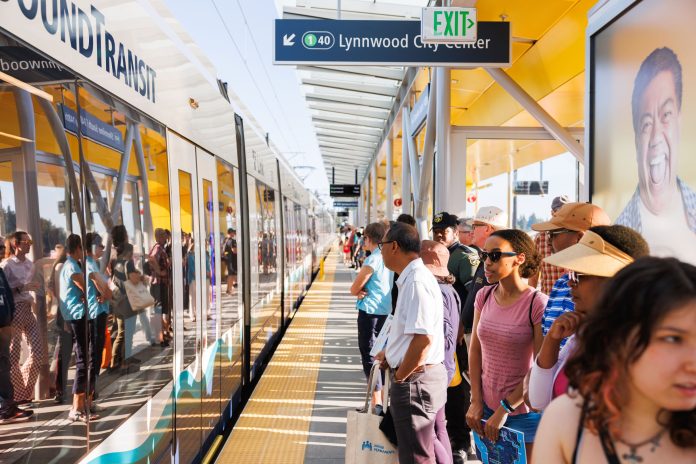On August 30th, crowds swarmed 1 Line light rail for the start of service on the Lynnwood Link extension, with plazas packed with entertainment and vendors outside the four newly opened stations. Thirty-one years after its founding, Sound Transit’s premier service now brings a second county into the fold. Residents of South Snohomish County and North King County, curious onlookers, and enthusiasts packed trains, Community Transit buses, and the thousands of parking stalls of the stations’ parking garages spread across the extension’s 8.5 miles to see the new alignment and take part in festivities.
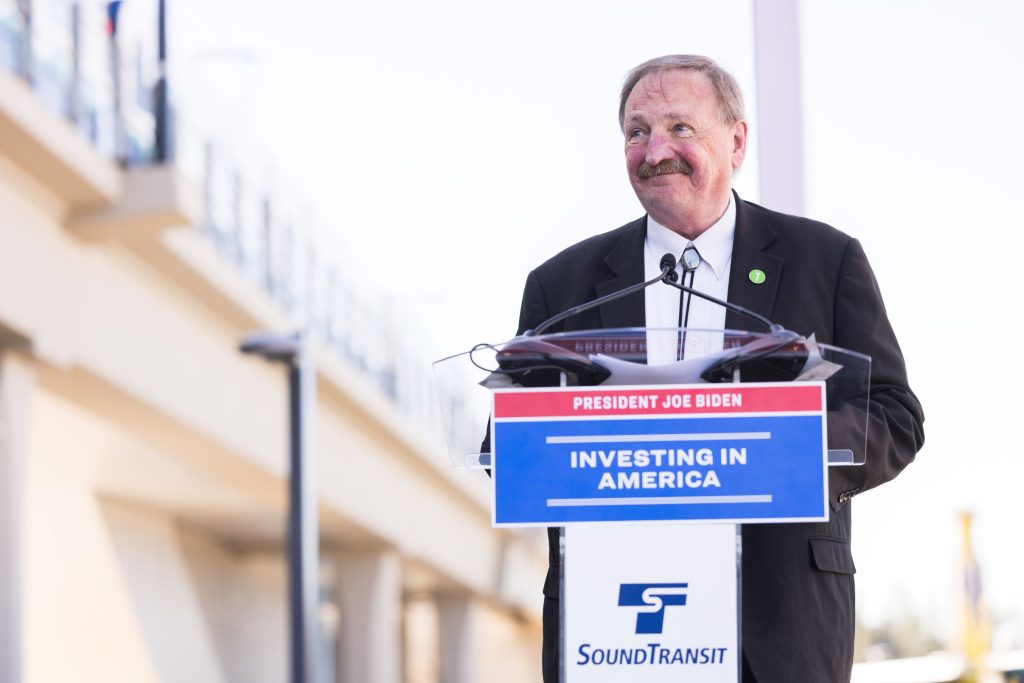
A marathon of speeches prefaced the first trains departing Lynnwood City Center Station. The line of speakers was kicked off and emceed by Snohomish County Executive Dave Somers.
“The story of the day is regionalism,” Somers said. “By connecting all of our separate communities, with safe, reliable rapid mass transit, we are building one sustainable Puget Sound.”
With the new extension to Snohomish County and the ribbon-cutting ceremony taking place in the new northern light rail terminus in Lynnwood, South Snohomish County was the focal point of the day.
Representatives of the Tulalip tribe followed the executive, kicking off their remarks with a prayer and song. Tulalip Tribes Director of Treaty Rights and Government Affairs Ryan Miller noted light rail could aid in environmental stewardship and restoring salmon runs, citing the reduction in toxic tire pollution associated with driving.
“The Lynnwood light rail is more than just a transportation project, it’s a symbol of progress and sustainability,” Miller said. “For generations, our people have stewarded the land, understanding the importance of preserving our natural resources. This light rail extension aligns with our values by providing a green alternative to driving, significantly reducing our carbon footprint. And by reducing heavy metals and toxic chemicals from brake dusts and tires that threaten our sacred salmon.”
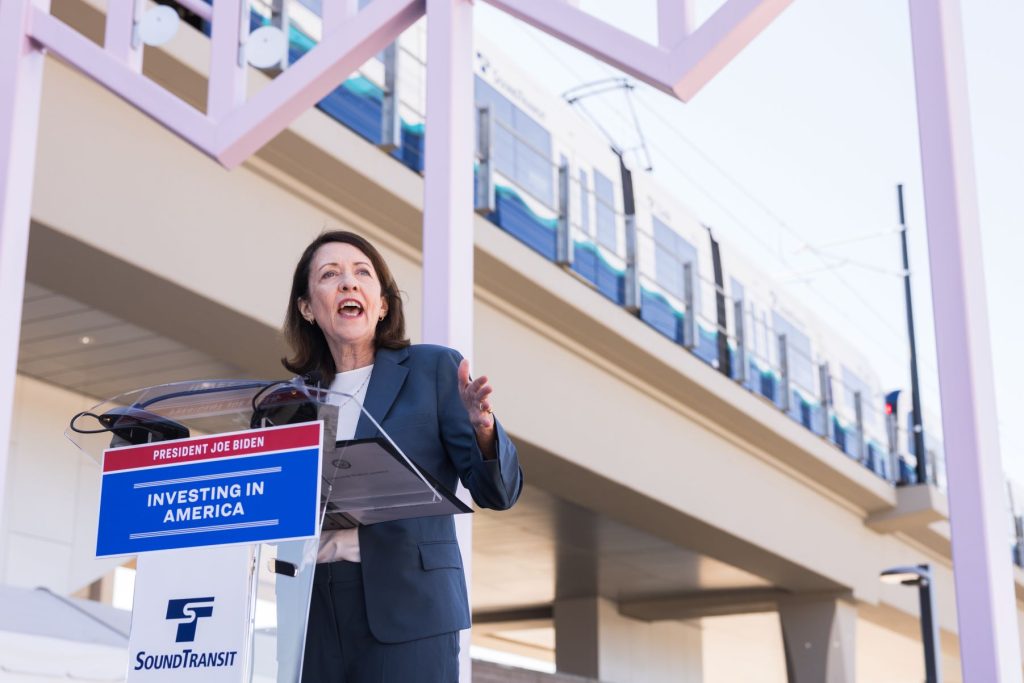
Washington’s U.S. Senators Patty Murray and Maria Cantwell described their fight to keep federal dollars flowing to the Lynnwood Link project during the Trump Administration. Their victories allowed the extension to secure a $1.17 billion grant from the Federal Transit Administration (FTA), keeping the project on schedule open in 2024. The agency also secured $658 million low-interest loan to support the $3.26 billon Lynnwood Link project.
“FTA is proud to help bring Link light rail to Snohomish County, expanding rapid transit access for hundreds of thousands of residents,” said Federal Transit Administration Acting Administrator Veronica Vanterpool. “As the Link system continues to grow, it’s now easier than ever to reach UW, downtown, Sea-Tac, and destinations all over the region.”
The senators also celebrated the roughly 10,000 homes built or planned around the light rail stations, new connections between people and opportunity, and time savings from grade-separated rapid transit. The Urbanist tallied up the housing development happening near each station:
- 3,087 homes near in the works near Shoreline South
- 1,700+ homes near Shoreline North
- 1,800+ homes near Mountlake Station
- 3,000 homes planned in Lynnwood City Center
King County Executive Dow Constantine reminded that crowd that North King County was also getting two new stations. Constantine contextualized the opening’s place in an exciting regional picture for light rail, including crossing Lake Washington to finally connect East Link (the 2 Line) with the 1 Line — a project tentatively tabbed to finish in late 2025.
“We are now well on the way to nearly doubling the light rail system to a 62-mile regional network. By next year, when we add two more major extensions to Federal Way and then across the lake, to the east side in King County,” Constantine said. “The 1 Line will connect to the 2 Line and you’ll be able to not only go north-south, but also you’ll be able to travel across the lake to Bellevue and to Redmond”.
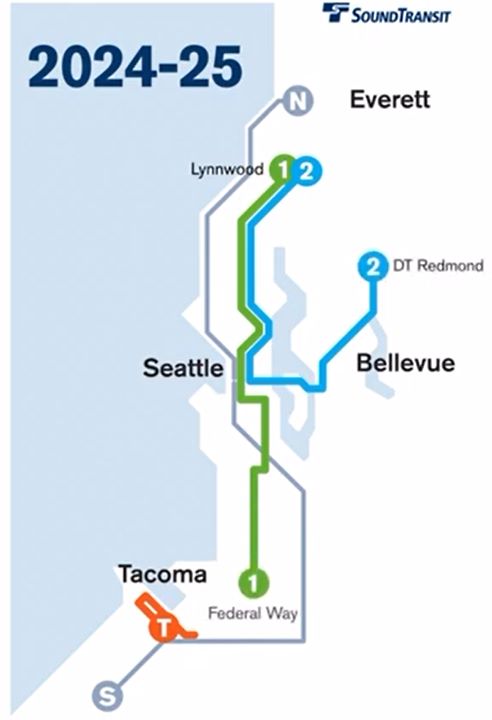
Sound Transit projects that Lynnwood Link will add about 50,000 daily riders to the system by 2026, although that projection was made before the pandemic sapped some regional ridership momentum. On the existing 1 Line, average weekday boardings hit a record high above 90,000 in July 2023. Lynnwood Link’s addition should push the system well above 100,000 daily boardings.
Representing the project’s labor partners, Todd Taylor, executive secretary of Northwest Washington Building and Construction Trades Council, gave numbers to the work it took to complete the project, and the opportunities it had created through apprenticeship programs.
“Contractors selected hired 8,493 total craftworkers, who worked a total of 6,048,083 hours. Out of those, 8,493 craft workers 32.4% of the workforce were workers of color. 44.1% of apprentices were apprentices of color. 7.4% of the workforce were women. And 20% of all apprenticeship hours were performed by female apprentices.”
Local representatives at all levels of government and interim Sound Transit CEO Goran Sparrman closed out the speeches. Congressman Rick Larsen made a cruel joke about Bellingham getting light rail in 2074, a year after Everett. Representative Liias remarked that the opening was the biggest think to happen in Snohomish County since Boeing’s first 747 plane rolled off the line in Everett, where he turned his attention to as the next light rail expansion for the county. The Everett Link extension is slated to open in 2037, barring further delays.
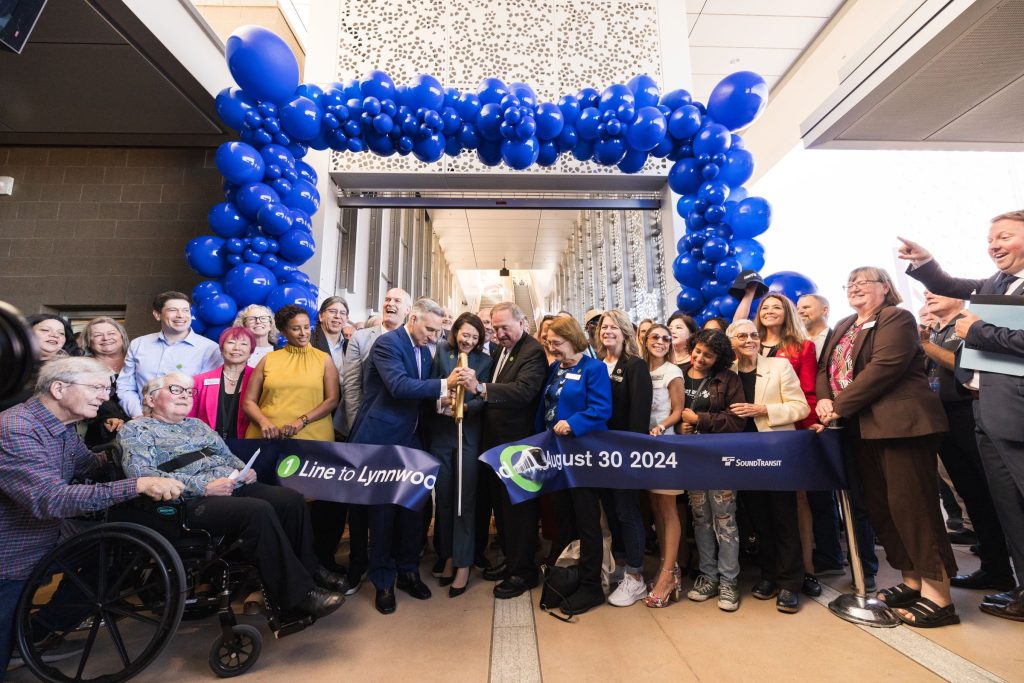
Lynnwood Mayor Christine Frizzell, who is also a member of the Sound Transit Board, noted Lynnwood has long been preparing for this moment.
“It’s hard to quantify my excitement to see the trains pull in and out of the Lynnwood City Center Station, something that felt like a dream for so long,” Frizzell said. “Lynnwood has been preparing for this milestone since the creation of our Legacy Lynnwood plan in 1993. This achievement would not have been possible without our community’s incredible support, and for that, I am grateful.”
Sparrman gave a nod to the challenges his staff overcame, including a lengthy concrete worker strike.
“The opening of Lynnwood Link is a testament to the hard work of the construction teams and Sound Transit staff who have worked for years to make this project a reality,” Sparrman said. “They persevered through the pandemic and a four-month concrete delivery strike to bring us to today’s celebration. Lynnwood Link’s opening also marks a transformative moment in Sound Transit’s history, as we enter Snohomish County. With the openings of the full 2 Line next year and the extension to Federal Way in 2026, we will have more than doubled the size of our system in just a few years, providing the residents of our region great options for easy, efficient travel to even more destinations.”
Night markets extend the celebration
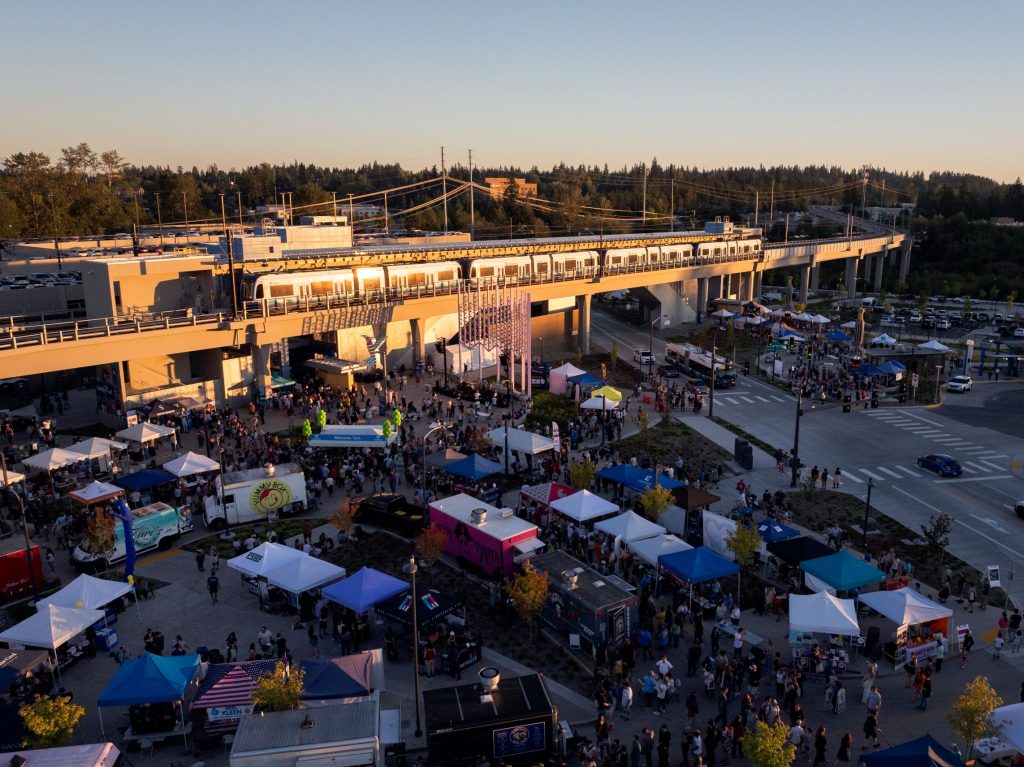
Once the speeches and ribbon-cutting was completed, the first trains left a little before 1pm. Attendees returned to the stations to celebrate the openings at the “night markets” happening at each of the four stations at 4pm. Crowds formed early to engage with vendors, enjoy food trucks, and check out all the other booths. Lucky attendees won or got their hands on the all-important Orca-Card-Mascot Boop plushies.
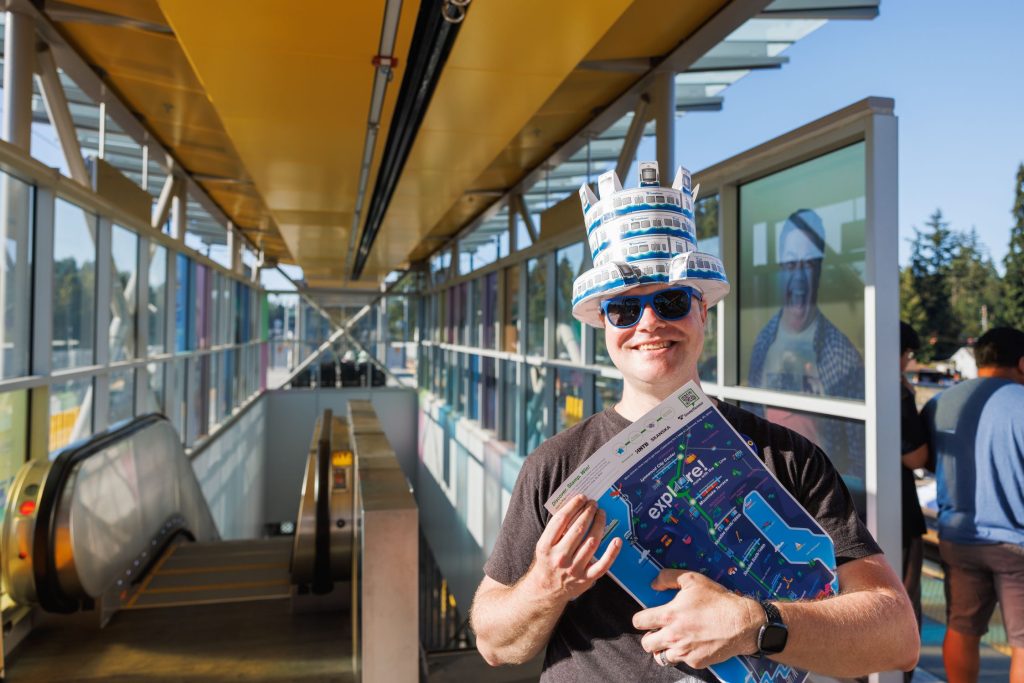
The night markets made great use of the plazas, open spaces, and parking lots adjacent to the four stations. They were a great reminder of how these outdoor markets can harness and retain activity in otherwise quiet plazas, making for great outdoor markets. The Capitol Hill farmers market takes over the station plaza every Sunday. Sound Transit has been hesitant to offer retail inside its stations, but perhaps it will consider night market on a regular basis, given the success of the launch event.
Some of the attendees even came out The Urbanist’s Lynnwood Link opening celebration at Hemlock State Brewing. For many attendees, it was the first time that had visited an establishment in Mountlake Terrace. Thanks for celebrating the monumental opening with The Urbanist!
Transit riders are sure to discover new destinations along Lynnwood Link in the months to come.
The Urbanist staff occasionally teams up to cover breaking news or tackle large projects. See more about our team on the staff page.


